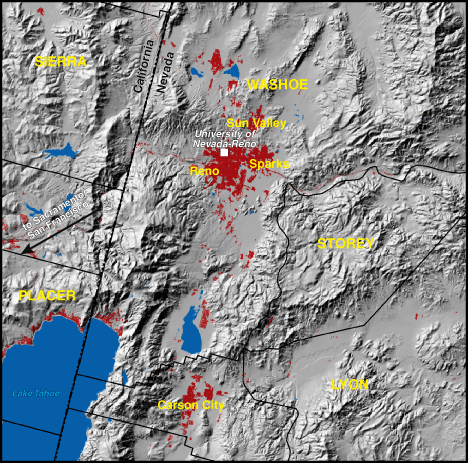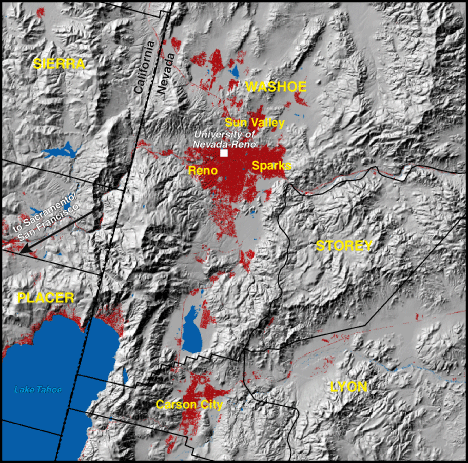Reno-Sparks, Nevada 1973


|
1970 Population - 137,231
Includes Washoe, Carson City, and Storey Counties. NOTE: portions of the above listed counties may not be visible on the map Red areas shown as developed land 29,600 acres (46 square miles) |
Reno was established in the Truckee "meadows" during the 1860s because of their location at the eastern end of a potential transportation corridor through the Sierras and access to the Comstock Lode silver mining district. The transportation goal was achieved when the first transcontinental railroad passed through Reno, linking San Francisco, 225 miles to the west, with the rest of the Nation. Interstate 80 later followed the same route. Sparks was created in 1904 as a railroad logistical center. Reno's proximity to political powers in Carson City led to its gaining the State's university. Gambling was legalized in the 1930s and, along with growing tourism and resort activity at Lake Tahoe, helped Reno-Sparks increase in size. |
Reno-Sparks, Nevada 1992

|
1990 Population - 297,636
Includes Washoe, Carson City, and Storey Counties. NOTE: portions of the above listed counties may not be visible on the map Red areas shown as developed land 55,000 acres (86 square miles) |
During the 1960s, changes in Nevada law encouraged further growth. First, corporations were allowed to own casinos, paving the way for larger gaming facilities. A second law created "free-port" tax zones that made the warehousing and distribution of goods from Nevada advantageous. The area benefited in all cases from access to California markets. Reno-Spark's growth has led to many challenges. The water supply in this arid region has placed urbanization at odds with irrigation-based agriculture. The basin in which the cities lie is susceptible to air pollution because of frequent temperature inversions. Past housing shortages and an influx of Californian retirees have forced lower income workers to the urban periphery, increasing pressure on existing infrastructure. |